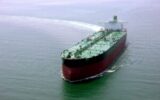China backs down; 30 million barrels of Iranian oil in the Malaysian Sea remain in limbo

President Trump’s return to the White House came with a tightening of U.S. sanctions on Iranian traders, brokers and oil infrastructure, with a raft of new legal measures being implemented to limit Tehran’s oil revenues. The pressure intensified amid the Iran-Israel crisis, with the White House expanding its sanctions first against smaller Chinese refineries (known as “teapots” in Shandong province) and then against Chinese port operators and intermediary companies accused of trading Iranian oil. With sanctions on more than 400 tankers, some 50 Iran-linked individuals and 20 companies, Trump’s pressure on Iran has reached an unprecedented level. But that’s not the end of the story.
Unprecedented U.S. Sanctions
The direct U.S. sanctions on Chinese refineries have likely disrupted the flow of Iranian oil to China. According to Kepler data, Iranian crude oil storage in floating tanks rose from 9 million barrels in mid-January to 33.4 million barrels in early August, the highest level since 2020. Most of these stranded tankers are anchored in the territorial waters of Singapore and Malaysia, the main hubs for Iranian ship-to-ship (STS) activity in recent years. Although Iran can ship oil directly to China, the country’s oil traders prefer to keep loaded tankers for some time near the ports of Lingayen and Tanjung Pelepas. The build-up of Iranian oil in the Strait of Malacca coincided with a significant drop in Chinese imports from Iran in July. This decline contrasts with the early 2025 trend, when Chinese imports of Iranian oil averaged 1.5 million barrels per day from January to March, reaching a record 2 million barrels per day in March.
Tags:oil
- Comments sent by you will be published after approval by site administrators.
- Comments that contain slander will not be published.
- Comments that are not in Persian or not related to the news will not be published.

Comments
Total comments : 0 Awaiting review : 0 Date: 0